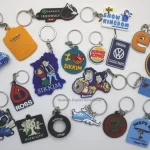If you sit down and really think about it, ball bearings are a fascinating invention! They are one of the integral parts that make so many of the machines we use every day work efficiently. The use of ball bearings goes back to as early as 40 B.C. where they were discovered to have been used on a Roman ship. Of course, they weren’t the steel ball bearings or ceramic hybrid ball bearings that we know today. They were rudimentary parts made from wood. But the concept was there!
The first patent for a ball bearing was granted in 1794 to Philip Vaughan, a Welsh ironmaster and inventor. His patent was for a ball bearing with iron balls that ran inside deep grooves and that were sealed in place by a stopper. These bearings were made to be used between the wheel and the axle in carriages, allowing the wheels to rotate freely.
By 1883, German Friedrich Fischer figured out how to mill and grind the balls for ball bearings into equal size and roundness to create a more consistent product. It was then that the bearing industry was formed. As knowledge of chemistry improved, the balls in ball bearings became more durable, and steel became the material of choice. Improvements in manufacturing allowed for the production of precision steel balls, and when it was discovered that ball bearings could improve the performance of bicycles, interest in producing more accurate ball bearings increased further.
The self-aligning ball bearing that we know today was invented by Sven Wingquist in 1907. Ball bearings continued to be refined, and improvements were steadily made that increased the performance and life of ball bearings. Growing demand for ball bearings prompted the foundation of multiple specialty bearing companies.
The development of ceramic hybrid ball bearings started in the 1960s and 70s, when there was a demand for bearings made from materials that were both stronger and less dense than steel ball bearings and that could withstand higher temperatures. Silicon nitride (a special type of ceramic) fit the bill, and ceramic hybrid ball bearings with silicon nitride balls and steel rings emerged as the next big development in the bearing industry. By the 1990s, those in the electric motor industry were realizing the unique advantages of ceramic hybrid ball bearings, and they became more commercially available.
Today, ceramic hybrid ball bearings are created for a variety of high performance applications. You see them being used in the aerospace industry, as well as in Formula 1 cars, racing motorcycle engines, and in industrial electric motors.
The ceramic hybrid ball bearings we sell at CBR are made with aerospace-grade silicon nitride balls that can withstand even the harshest conditions without chipping, fracturing, or failing. We stock several different sizes of bearings and can ship them out same day. For less common sizes, we also have very fast turnaround times.
Check out Businessing Magazine for more information more about ceramic ball bearings or other tips on small business and manufacturing.





